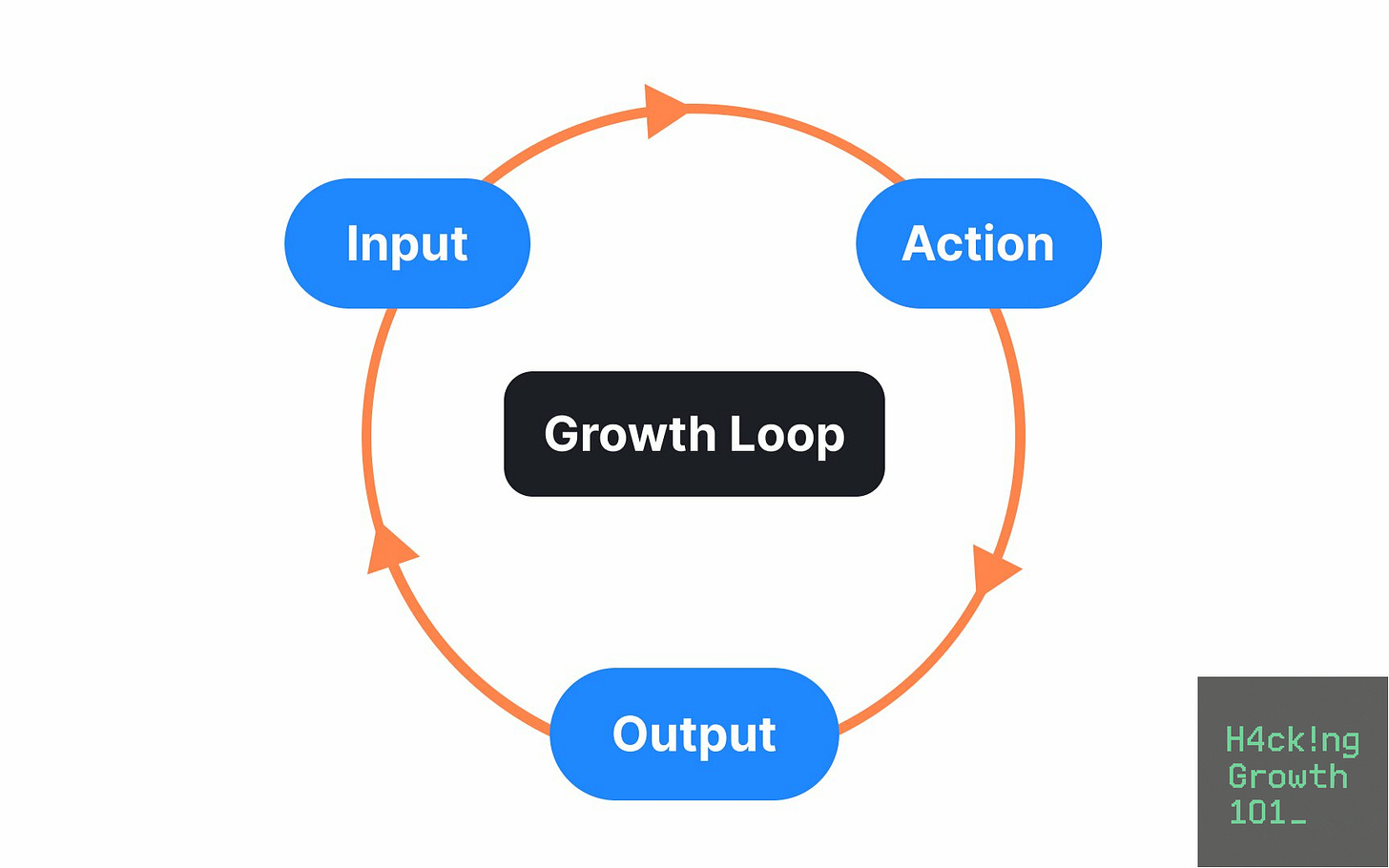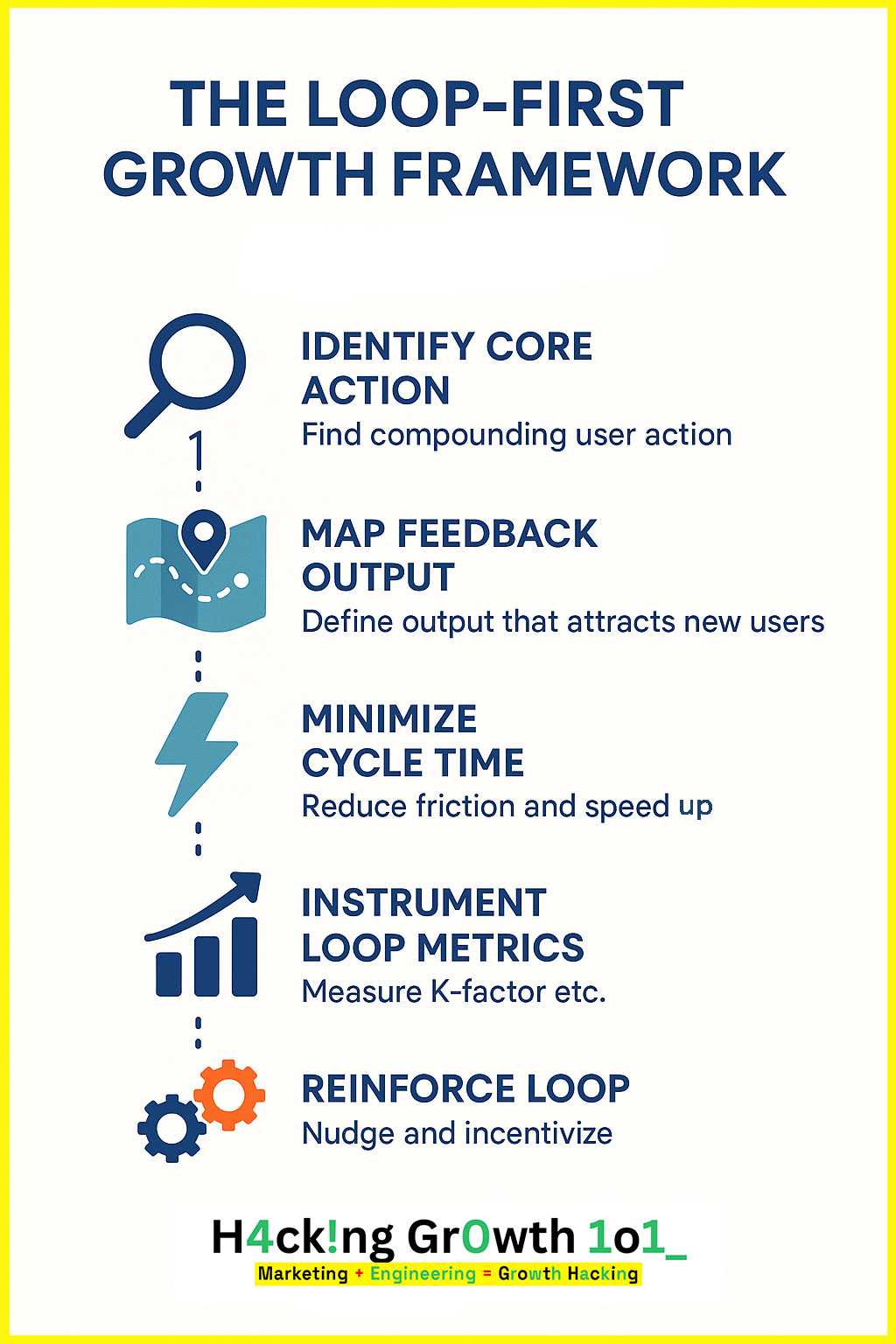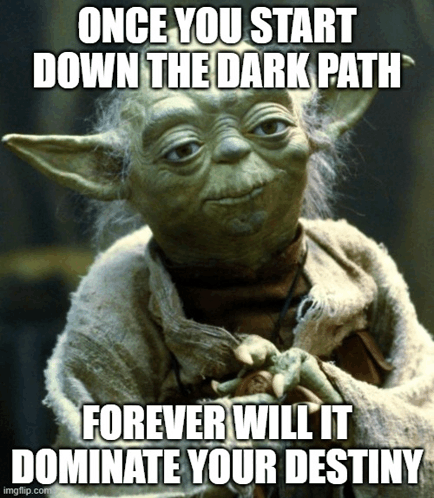Growth Funnels vs Growth Loops: Why Growth Loops Win at Hockey-Stick Growth
How Growth Loops Beat Funnels at Sustainable, Hockey-Stick Growth.
Why does This Debate even matter in 2025 and beyond?
Growth is changing. What worked a few years ago, cheap Facebook ads, easy cookie-based targeting, isn’t working as well now.
The “spray-and-pray” funnel model of pouring money into ads is getting less efficient every day. Digital ads are more expensive and less targeted (third-party cookies are nearly dead, and 44% of marketers expect to spend 25% more just to get the same results as in 2021!).
At the same time, product-led growth (PLG) and network effects are on the rise. Today 91% of companies plan to increase their investment in product-led growth strategies, which proves that engaging the user through the product itself will drive more efficient growth.
Many of the most valuable tech companies have achieved scale through network effects – in fact, about 70% of the value created in tech since the 1990s has come from companies with strong network effects, according to NFX.com.
Finally, investors and boards in 2025 care more about efficient growth than growth-at-any-cost. The free-money era is over; now your CAC:LTV (Customer Acquisition Cost vs Life Time Value) ratio and organic growth matter.
When Boards [are] demanding efficient, scalable growth... staying the course [on old tactics] isn’t just risky – it’s unsustainable.
In this context, the funnels vs loops debate isn’t just theoretical – it’s about survival. Founders and growth teams need a scalable engine that doesn’t rely solely on ever-higher ad spend. That’s where growth loops come in.
What is a “Growth Funnel”?
It’s the step-by-step model for acquiring and converting customers. A famous example is Dave McClure’s pirate metrics (AARRR): Acquisition, Activation, Retention, Referral, Revenue.
In a funnel, you pour a lot of prospects in the top, and at each stage fewer come out the bottom as paying, loyal customers.
Key funnel metrics include conversion rates at each stage, cost per acquisition (CPA), and drop-off points (where users “leak” out of the funnel).
Strengths of funnels:
They bring clarity and focus. By mapping the user journey stepwise, funnels let you optimize each stage (like improve landing page signup rate, then improve trial-to-paid conversion).
It’s straightforward to attribute which channel brought a user in and see where they drop off.
For example, if 1,000 people visit your site (Traffic) and 100 sign up (Acquisition), you have a 10% conversion at that step – you can then experiment to improve it.
Funnels are also really good for quick bursts of growth or big launches – you can crank up the ad budget, run promotions, and push a lot of people through the pipeline.
Weaknesses of funnels:
The funnel is fundamentally linear and one-and-done. It doesn’t inherently create a flywheel effect; once a user converts (or doesn’t), they don’t automatically drive new prospects into the top.
Funnels also tend to “leak”, people drop out at each step, and those losses are gone unless you spend more to re-engage them.
Over-reliance on funnels leads to a plateau, because you eventually saturate your channels (the Law of Shitty Clickthroughs, all marketing channels get worse over time).
A purely funnel-focused approach leads to siloed thinking and diminishing returns as you pour more money into ads to outbid competitors.
funnels often have rising customer acquisition costs and can flatline once you exhaust your market or budget.
A quick reality check: Funnels still have their place. They’re great for lighting the initial spark, especially if you have no user base yet. But as we’ll see, the real magic happens when you add loops on top of the funnel.
What is a “Growth Loop”?
A growth loop is a system where each action a user takes generates an output that brings in new users, feeding back into the top of the loop.
In other words, the process is circular (or compounding), not linear. A simple formula for a growth loop:
Input: A new user joins via some channel (maybe your funnel or another user’s invite).
Action: That user engages in a core product action that inherently produces something – maybe they create content, invite a colleague, or generate data.
Output: The result of that action is exposed to others (like shared content, an invitation, a visible review), attracting new users who then become additional inputs, and the cycle repeats.
In a true growth loop, every iteration of user activity brings in more users without additional marketing spend, creating compounding returns.
Think of this as the “compound interest” of growth; each cycle builds on the last, leading to the hockey-stick curve (that every founder drools over 😜).
For example, think of how each Facebook user who posts content potentially brings in new users who see that content.
Common growth loop archetypes (with examples)
Not all loops are viral social media loops. Here are three common types of growth loops. They especially work best for SaaS and AI:
Viral Referral Loop: Existing users directly bring in new users, often incentivized.
Example – Dropbox: When users invited friends to Dropbox, both got extra storage. This simple referral loop led to a 3900% user growth in 15 months for Dropbox. Each user effectively became a marketer.
Example – PayPal: In its early days, PayPal literally paid users to refer friends ($10 each). It sounds costly, but it ignited a viral fire. PayPal saw 7–10% daily growth (yup, you heard that right, daily growth) in users, quickly hitting over 100 million users.
These referral loops work because each user’s incentive to invite creates an exponential effect (one user brings another, who brings another, and so on).
User-Generated Content (UGC) or Content Loop: Users create content that attracts new users via its visibility.
Example – Notion: Notion users build public templates and pages (like a project plan, a wiki, etc.). New people discover these templates (through search or word-of-mouth) and sign up to use or copy them. This loop of users creating templates that bring in more users has been huge for Notion – it grew to a $10B valuation and 4+ million users largely through community-shared templates and content.
Example – OpenAI’s ChatGPT: The share link feature lets you generate a sharable Q&A page. Users share interesting chat links, which draw in others (even non-logged-in folks can view and then are prompted to try ChatGPT themselves). This organic sharing helped ChatGPT become the fastest app ever to reach 100 million users. Every shared conversation is an ad for the product.
Data Network Loop: Each user contributes data or value that improves the product for future users, attracting them.
Example – Waze: Every driver on Waze passively contributes traffic data and can actively report road issues. This makes the app more useful for everyone else in real-time. As a result, more drivers join, which further improves the data accuracy. Waze amassed over 50 million users globally largely via this loop of user-contributed data making the service better.
Example – G2 (Software Reviews): G2 crowd sourced user reviews for B2B software. Those reviews give G2 lots of Google-indexed content and trust with software buyers, drawing in ~5 million visits a month from people searching for software advice. That traffic then yields more user reviews. G2 built a $1B+ brand on this UGC loop with an estimated $65M revenue by leveraging users as content creators.
There are many flavors (viral loops, content loops, collaboration loops, etc.), and hybrids too.
The key is the math of compounding vs linear.
In a loop, even a modest “viral coefficient” (say each user brings 1.1 new users on average) can lead to exponential growth if the cycle repeats quickly enough.
On the other hand, a funnel is additive, meaning you add X users per month via marketing; growth is linear if X is constant.
With growth loops, growth is geometric.
Think about it like this, 100 users invite 100 more (now 200), who invite 200 more (400), and so on – a few cycles and you’ve far outpaced a linear 100-per-month funnel.
Disclaimer: Speed matters too: a viral coefficient of 1.5 won’t help much if it takes a year for users to refer others, but if it happens in days or weeks, look out. We’ll discuss loop velocity later.
A funnel is great at getting people in the door, while a loop makes sure they don’t come alone
Where funnels still shine:
Loops aren’t a silver bullet for every situation. For example, if you have a high-ticket B2B product with a long sales cycle and heavy compliance (say, selling enterprise software to banks), a linear funnel or traditional sales pipeline will work better than a viral loop.
Funnels excel for one-off big conversions where referrals or sharing are less likely. They’re also necessary early on, when you literally have zero users. You will need direct outreach, PR, or paid ads (a funnel approach) to reach a critical mass before any loop can start.
The best companies actually use both: funnel tactics to kickstart growth, then loops to sustain and compound it.
The Loop-First Growth Framework
So, how can you design a growth loop for your product? Here are the steps:
Step 1 – Identify a core user action that might compound.
Look at your product and ask: What do users do that could attract others? It might be sharing content, inviting colleagues, creating something visible, or even just using the product in a way that others see (e.g. sending an invoice with your software’s logo on it). For Calendly, the core action was scheduling a meeting – that naturally involves another person, which is a chance to pull a new user in.
Tip: If users are already organically telling friends about your product or asking colleagues to join, that’s a huge clue. Focus on that. “Figure out what your customers are already doing or want to do socially, and lean into it”.
Step 2 – Map the feedback output that will attract the next user.
For the chosen action, what is the “output” that gets in front of a potential new user?
In a referral loop, the output is an invite message or incentive.
In a content loop, it’s a piece of content (a report, a design, a post) that others can see.
Easy to remember:
User does X → Y is produced → new users see Y and are driven to product.
With Notion’s template loop, User creates useful template → Template is publicly shared (output) → New user finds template and signs up to use it.
The output has to carry real value or curiosity to others, or else the loop will fall flat.
Sometimes you have to tweak the product to boost the output’s appeal (e.g. add a “Made with X” badge, or allow content to be indexed by Google).
Step 3 – Minimize cycle time and friction.
Loops will break if they move too slowly or if it’s too hard for users to complete the key action. You want to reduce the time and effort between a user’s action and the next user coming in.
Some ways to do this:
Make sharing or inviting ridiculously easy (one-click, in-app, and via multiple channels).
Automate the output if possible, like every time someone creates a public page, it’s automatically indexed or added to a showcase page/library.
The faster one loop cycle completes, the more cycles can compound.
As an example, imagine two products: one where users invite a friend within 1 day of signing up, versus another where they invite after 3 months – the first will grow much faster even if they have the same referral rate.
Latency kills loops, so speed it up.
Step 4 – Instrument loop health metrics.
You can’t improve what you don’t measure. It’s a famous quote in marketing. And it’s true too.
Key metrics for loops include:
viral coefficient (K-factor), how many new users does each user bring on average.
loop cycle time, how long it takes for a cycle (e.g. average time between a user signing up and them causing a new signup).
retention/activation – do users stick around to keep the loop going or do they churn out after inviting one friend?
Set up analytics to track invites sent, conversion of invites, content shares and their click-through, etc.
Also track the quality, are referred or organically acquired users activating at good rates?
Instrument everything: use product analytics (PostHog, Amplitude, Mixpanel), and build dashboards to track it regularly.
Treat your loop like a mini-funnel of its own – measure each step of the loop and where it might be leaking.
For example, if lots of invites are sent but few are accepted, your invite message needs improvement or the incentive isn’t right. Point is something needs to be fixed.
Step 5 – Reinforce the loop with product features & incentives.
Once the basic loop is in place, strengthen it.
This means,
adding in-product prompts (e.g. a nudge: “Invite a teammate!” in the UI at a key moment),
gamification (badges or status for those who contribute content or refer others),
or incentives (credits, discounts, extra features for bringing new users).
The best loops feel natural (users want to do it) but a well-timed prompt or reward will also boost participation.
Make the loop ingrained in the product experience.
When engineered well, users don’t even realize they are part of a loop; they’re just getting value.
Design systems that reward repeatable actions rather than forcing users through a marketing funnel.
Iterate: measure the results, tweak the design, and reduce friction with each cycle.
Case Studies and Examples (again by Posthog): Loops in the Wild
The Dark Side 👾 of Growth Loops
Even well-intentioned loops can fail or backfire, so you have to watch out for these common pitfalls:
Loop starts but still growth stalls: This often happens if loop velocity is too low – e.g. users eventually invite others, but it takes them months, or only a tiny fraction of users ever complete the loop.
If your loop isn’t cycling frequently (say the average user brings someone new only after a year), growth will be negligible.
Aim for at least a sub-cycle per user in the first week or two. Reduce friction and incentivize quicker action. Even great growth loops fail if they spin too slowly.
Monitor the loop cycle time metric closely.
Value doesn’t compound (output ≠ new user input): In a true loop, the output of one user’s action directly leads to a new user’s acquisition or activation. If that’s not happening, you might have a “pseudo-loop” that’s really just a product feature.
For instance, if users create content but it isn’t discoverable by non-users, it’s not driving new acquisition – you’ve effectively got a closed circuit.
Make sure the loop is closed: the output must feed back as input.
If you find your loop isn’t actually bringing in new people, you need to adjust the mechanism (e.g. open up content, add sharing buttons, etc.).
No measurable new users from the loop = no loop!
Incentive abuse or fatigue: Loops that rely on incentives (rewarding referrals, etc.) can be gamed or can lose effectiveness over time.
We’ve all seen spammy referral code posts… If your incentives are too generous, you might get lots of low-quality signups who just want a reward (and they churn immediately).
Or if the incentive never changes, people tune it out.
Structure incentives wisely – ensure they attract the right users.
And watch for fraud (people making multiple accounts for rewards).
The best practice is to use incentives to kickstart and then let intrinsic product value take over.
Also, you can build in fraud checks or limits (Dropbox capped referrals at 16GB of bonus, for example).
Mis-attributing loop gains to other channels: This is more of an analytics caution.
When your loop kicks in, you might see a surge in “organic” or “direct” traffic/users. It’s important to connect the dots and give the loop credit.
If not, you might mistakenly double down on a paid channel thinking it’s driving growth, when actually it was your users inviting friends.
To avoid this, track referral sources carefully (use unique invite links, etc.).
This also means internally evangelize the loop – help your team (and investors) see how that rising curve is loop-driven.
It prevents panic if you cut ad spend and growth still happens (a good thing!).
Conversely, don’t take your foot off the gas too early – monitor if the loop truly sustains or if you still need funnel inputs.
Treating loops like funnels (wrong mindset): A loop isn’t just a funnel that you set and forget. It’s more like tending a garden than hitting a one-time target.
Common mistakes here include trying to force users through a rigid sequence (like a traditional funnel campaign) instead of creating an environment where they want to participate repeatedly.
If users feel like they are being “marketed at” as part of a loop (e.g. popups pestering them to “Refer now!” at every click), the loop will turn people off and even hurt retention.
Design the loop action to be a natural part of using the product, not a distracting obligation.
And continuously monitor the loop’s health – think of it as an ongoing system to optimize, not a one-off A/B test.
A well-tuned loop is hard to push at first, but then it gains momentum.
What’s the verdict?
In the debate of growth funnels vs growth loops, the smart move isn’t to pick one, but to evolve from funnels to loops for long-term scale.
Use funnels to ignite initial growth, but design growth loops to turn your users into your greatest acquisition channel.
As Brian Balfour puts it, “Growth loops compound momentum, whereas funnels run out of fuel.”
In 2025 and beyond, the winners won’t just be the ones who get customers – they’ll be the ones whose customers get them more customers. 🚀









